In a world where we’ve given up all pretense of individual responsibility we’re flooded with an ever expanding universe of safety regulations, safety stickers and short power cords. When I look at the sticker on my lawn mower, “Caution! Do not reach under mower while blades are turning,” I can only imagine the scene in court. “Yes your honor, I never imagined that a six horsepower grass cutter could also cut fingers off,” and from the jury of his peers, “We find that it was obviously improperly labeled. We’re ordering the manufacturer to pay you ten million and put warning stickers on their mowers.” I can only shake my head as I peel off the twenty or more safety stickers intended to help me operate my chainsaw safely.
Somewhere out there in all those safety regulations there’s one that demands short power cords for anything involving the kitchen. There’s no other explanation for giving me a 12 inch power cord on my coffee maker, 12 inches doesn’t even clear the cabinets. Certainly it’s not a matter of cost. An extra foot of power cord would be pennies.
Maybe I should start at the beginning. Recently my wife and I said a fond farewell to her old Keurig coffee maker. It had served us well but it’s time had come. We almost didn’t buy another Keurig. It works great but like printer companies they had decided to restrict people to products licensed by them. My wife creates her own tea blends using a cup from Keurig but this was also locked out. The protection is easy to defeat and many companies offer free solutions but we found it hard to support this kind of behavior by buying another Keurig.
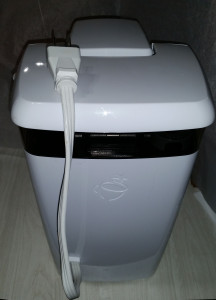
Keurig with short power cord
Still the Keurig is remarkably convenient so we settled on the Keurig Mini Plus because it did not have this restriction. While this model is at the lower end of their pricing spectrum, I don’t believe the short power cord was Keurig’s attempt to revitalize their bottom line. When I look at my kitchen, all my appliances have short power cords. I can’t imagine any reason for these ridiculously short power cords except a misguided attempt at my safety. Do they really think I’m safer when I use a power strip on my kitchen counter for my morning coffee?
My kitchen is by no means state of the art and power outlets are few and far between, I’m sure there’s a wiring code that covers that. In order to support an appliance having less than 12 inches of cord, I can use an extension cord or a power strip. In order to avoid the inevitable spilt liquid on my counter top coming into contact with my power strip, I could mount it upside down to the bottom of my cabinet. With only my wife and I, it’s unlikely that she’ll be using the blender while I make coffee.
Maybe I should stick to an extension cord. Unfortunately, if I spill the coffee or the juice on my counter, the connection between the cords offers an excellent path for the coffee. If I survive the fire, I’ll probably electrocute myself trying to put it out.
I know somewhere out there, there’s a safety committee that makes these rules. What I don’t know is if they truly are trying to protect me and failing miserably or if they are trying to limit the manufacturer’s liability. It’s my firm belief that these people are not idiots, they know that I’ll have to use a power strip or extension cord but their liability ends with their power cord.
In the US, there are two major organizations that develop safety regulations for power cords and electrical power distribution, National Electrical Manufacturers Association (NEMA) and UL, the organization formerly known as Underwriter’s Laboratories (UL).
NEMA creates the standards such as how your electrical sockets are constructed, how much force they should exert on the contact, their current rating and so on. Being used to SAE standards, where the specifications for a screw can cost upwards of $400, I was amazed that most of the NEMA standard were $60 or less and many were free. Still after going through fourteen pages of publication titles, I saw nothing suggesting, “Improved Kitchen Safety Through the Use of Ridiculously Short Power Cords.”
Quoting from Wikipedia, “UL provides safety-related certification, validation, testing, inspection, auditing, advising and training services to a wide range of clients, including manufacturers, retailers, policymakers, regulators, service companies, and consumers.” I couldn’t help but notice they put consumers last.
Would that their site be as easy to browse as NEMA’s site. Instead of a fourteen page index, they use categories with sub-indexes for every category. Still their prices would have made SAE proud. Wikipedia mentioned that they went from a non-profit organization in 2012. Their prices for publications made that abundantly clear.
Although my attention span did not afford me the time to crawl through their endless maze of sub-indices, thirty seconds with Wikipedia gave me “UL 1026, Electric Household Cooking and Food Serving Appliances.” I have to believe that this is the organization responsible for my short cord.
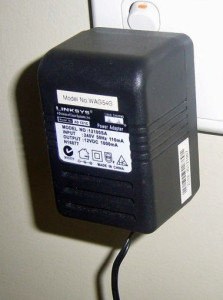
Typical wallwart
It makes perfect sense for UL to specify a short power cord. UL provides a measure of protection from lawsuits by certifying a product is safe. Never mind that the consumer using the product has to violate several other safety rules in order to use it, the product as built is safe. By that same thought process, it would be even safer without a power cord, maybe they could make battery operated or even better use a wall wart power supply. Yes, UL regulations are responsible for the popularity of all these little power supplies that are always on and force you to use a power strip. Some compromises have to be made in the name of safety.
All is not lost though, now that UL is operating for profit, they can come up with a whole new set of standards for kitchen safe power strips and extension cords. I can see a whole new line of power strips with six inch cords. You know it’s coming.
© 2015 – 2019, Byron Seastrunk. All rights reserved.

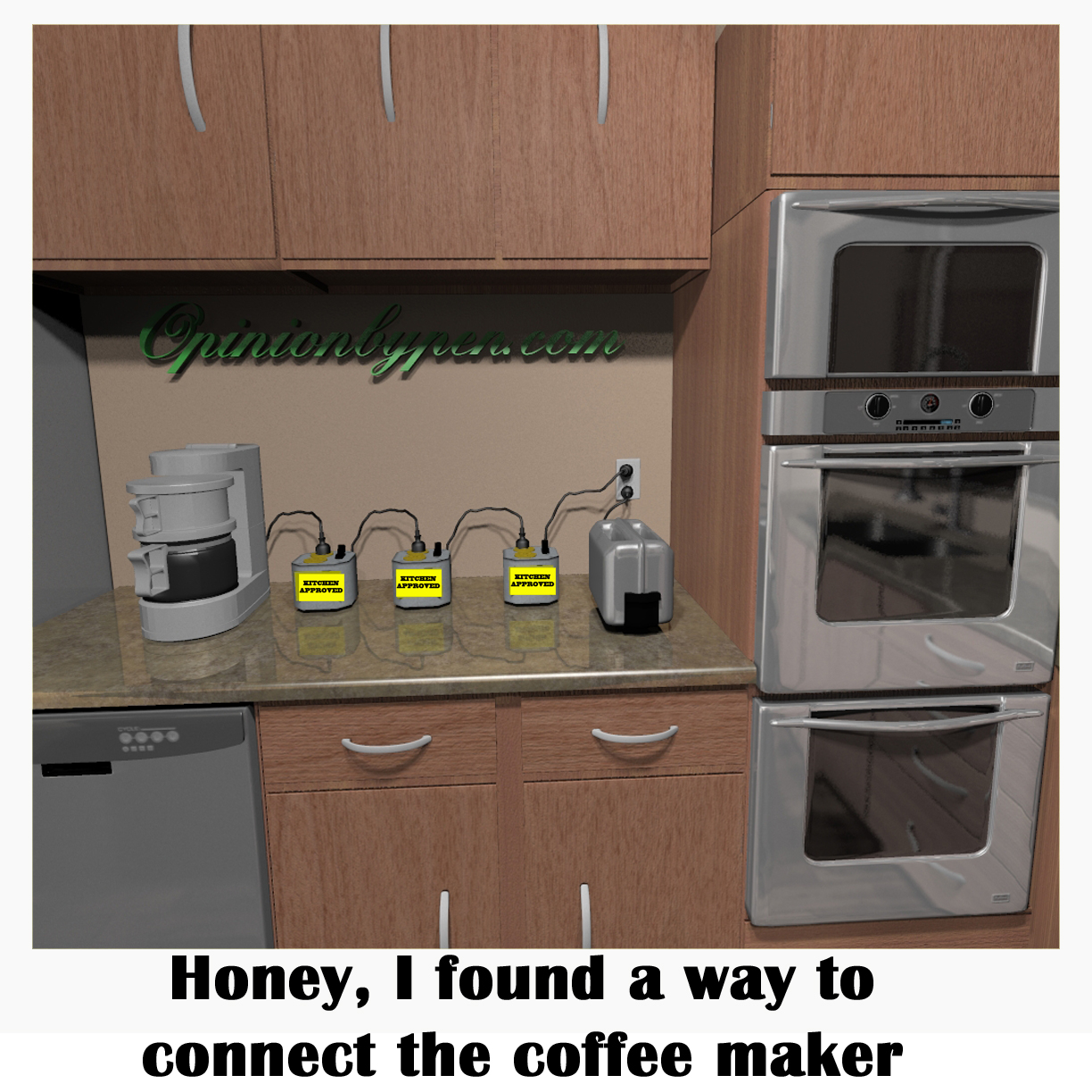
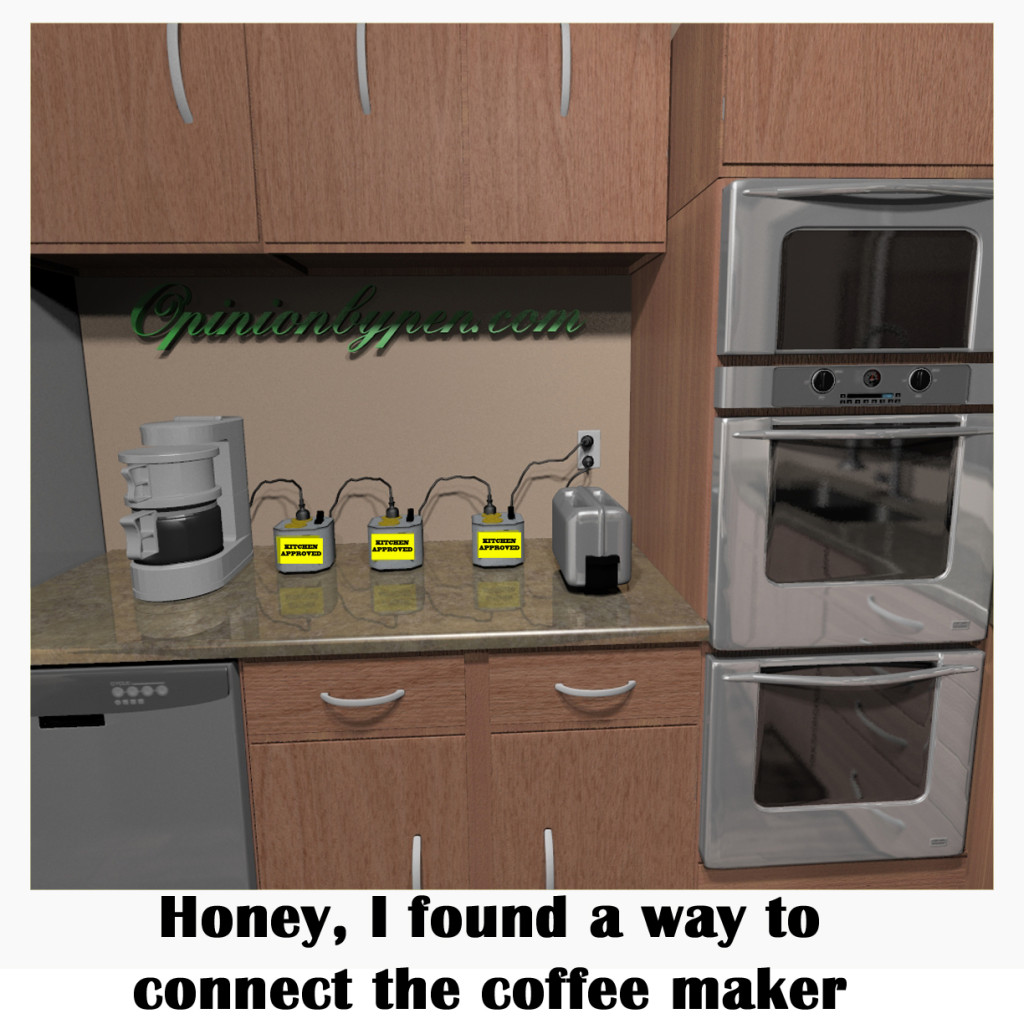


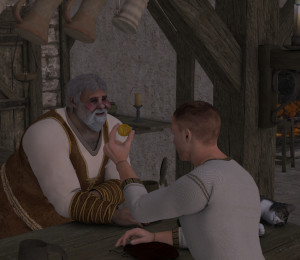






Agree so much as I am sure many others do. .. If only the companies making the appliances would listen and make longer cords. It’s far more hazardous to use an extension cord than to have an actual useful length of power cord in the first place. If there’s such a concern for the idiots who walk on their counters or use their toasters on the floor to trip over them include cord winders or something so that those of us who actually need more than 8′ – 12″ can safely use our small appliance. I’ve found that the outlet waaaay over there isn’t really a good location for the appliace when it would be much closer to WATER than if I put it on the other side, making it further from the water source, but also from the outlet… they just keep making the cords shorter each time I upgrade an appliance
If you think a one foot cord is short, just wait another twenty years. These people need to work and making new rules is how they earn their living. Can’t hardly blame them … they love to eat just as much as we do.
Hey Bryon, the additional cord is probably stuck inside the cord storage area. Try pushing in a bit with your finger to see if you can release it. (It should be about 2 feet long.)
My house was built in the 60s as are most of the houses in this city and the best to accommodate the rubber tire industry, and also next city Hoover cleaners The cupboards are not far enough above the counter for the Kuerig to fit under, let alone opening the pod cover. This causes a major inconvenience because first, I cannot use my coffee maker until I purchase another extension. Second, I have to invest another at least $12 on top of the Keurig I just bought in order to use it.
The reasoning in the package for “a short power-supply cord is to reduce risks resulting from becoming entangled in or tripping over a longer cord.” I’d like to see the person that has to walk on top of counters OR see the person that puts the Keurig on the floor that could pose a tripping hazard.
I agree with above statements that everyone does not have a plethora of several outlets available every 2 feet to accommodate every short cords. Nor do they desire to move the appliance for every use so only one or two appliances are used at one time.
Thank you for allowing me to vent and share this short power-supply cord frustration.
I totally agree with you I just got my new car again I can’t use it. I do not have mine in a counter. I have it on a chalk painted antique buffet which is my coffee bar. The cord only needs to go from the machine to the outlet on the wall behind the buffet which is about 2 feet and this thing doesn’t make it to the outlet. How ridiculous is this?
Totally agree with you!! So it is all right to use any extension cord?
Unfortunately no and that’s what makes the short power cords really dangerous. Most of the kitchen appliances with short power cord require high current and will cause significant heating if a low current extension is used. Significant enough to cause fires. I chose cords that are as short as possible and with the lowest AWG practical. http://www.amazon.com/FIRMERST-1875W-Profile-Extension-White/dp/B073FDJ4NY/ is a one foot cord with 14 AWG wiring. Always verify your cord is not heating up before using it for an extended time.
At least make the cord the width of the average counter top.
I totally agree with you I just got my new car again I can’t use it. I do not have mine in a counter. I have it on a chalk painted antique buffet which is my coffee bar. The cord only needs to go from the machine to the outlet on the wall behind the buffet which is about 2 feet and this thing doesn’t make it to the outlet. How ridiculous is this?
100% in agreement– my toaster oven I’d had for 7 years gave out recently (timer stopped working, so it just kept heating bread until it was black and smoking), went to both a Target and a Walmart and found 2 satisfactory replacements, only to bring them home and find out that the cord is about a foot shorter than I need (not only that, it’s on the exact OPPOSITE side from the outlet… so that if I turned it facing the wall, I MIGHT be fine). What’s even more frustrating is that most floor models DON’T have cords, and the packages specs don’t list anything about cord lengths, I could easily order 2-3 others off Amazon, only to find out they all have the same inconveniently short length. Makes zero sense. What’s even more frustrating is that they say you’re NO supposed to have an extension cord, or that most indoor ones won’t suffice (according to this article)… which basically means I probably have to pay an electrician $100+ to try to substitute a longer cord on a mere $25 toaster (since I don’t know how myself), since having one install an additional outlet is NOT an option since I rent. https://gizmodo.com/5903218/how-to-choose-the-right-extension-cord-for-anything
Amazon sells a number of 1 foot extension cords. As long as you get the 16AWG or lower and you’re not powering a space heater, you should be fine.
Have you ever found a coffee maker with a longer cord? My company will allow one at my desk but no extension cords
Here is it after 2 AM and I am searching the internet for an answer to why small appliances have such short cords and I found your site. I found your thoughts hilarious and on point. Thank you for this deep insight. I agree with all.
Need more outlets